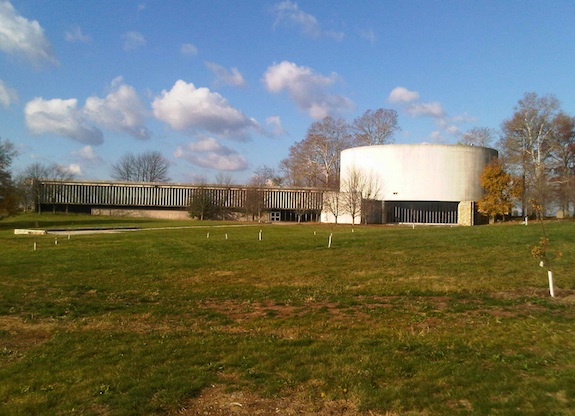The Gettysburg Cyclorama Is Gone Forever
Richard Neutra’s Gettysburg Cyclorama building demolished

The Cyclorama building in happier, less demolished days. Photo: National Park Service.
After a long legal battle and strong words from preservationists of all stripes, demolition work has begun on the Richard Neutra-designed Gettysburg Cyclorama.
Built in 1962, the Cyclorama building was part of the National Park Service’s Mission 66 program, a mid-century initiative designed to use the nation’s new highways to get people to spend their family vacations driving to national parks and historic sites instead of the beach.
The Chester County Daily News reports:
The park service has planned to tear down the building since 1999 but the architect’s son and a preservation group opposed the decision, and a court battle ensued that lasted more than three times the length of the Civil War. A court-ordered study last year concluded that demolition was the best course of action.
The building was constructed to house Paul Philippoteaux’s 360-degree painting of Pickett’s Charge, which was moved to a new visitor’s center in 2008. Some Civil War historians and preservationists long advocated its demolition, saying the building — which closed in 2005 — blocked views necessary to teach the story of the battle of Gettysburg.
Advocates of demolition called the Modernist structure a blight upon the historic landscape and hope to see Gettysburg returned to a more natural state, while the building’s advocates point out that turning back the clock to 1863 is, in fact, impossible:
“It’s the National Park Service’s own history,” said Susan Cabot, of Harrisburg.
Visitors can look across the field from the Cyclorama building and see Steinwehr Avenue, a busy street lined with fast food restaurants and heavy traffic, Cabot said.
This isn’t the first time the NPS has stepped in to moderate the Gettysburg landscape. In 1974, the agency purchased Gettysburg Fantasyland, a small-scale Disneyland-style theme park which opened in 1959 just south of General Meade’s headquarters. Before it closed in 1980, Gettysburg Fantasyland featured attractions like the Enchanted Forest and Santa’s Village; Fort Apache, which included nightly “attacks” by actors dressed as Native Americans; Rapunzel’s Castle, and a dairy barn that allowed visitors (5′ and under, alas) to slide into a pile of hay. Entrants to the park were greeted by a talking, twenty-three foot Mother Goose.
More from Smithsonian.com:
How We’ve Commemorated the Civil War
Where Travelers Go to Pay Their Respects